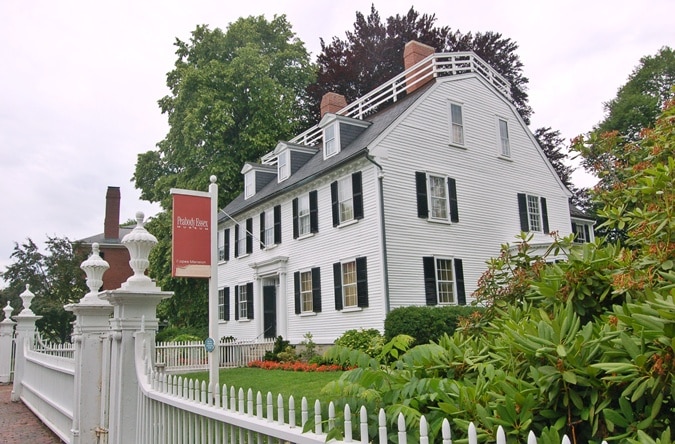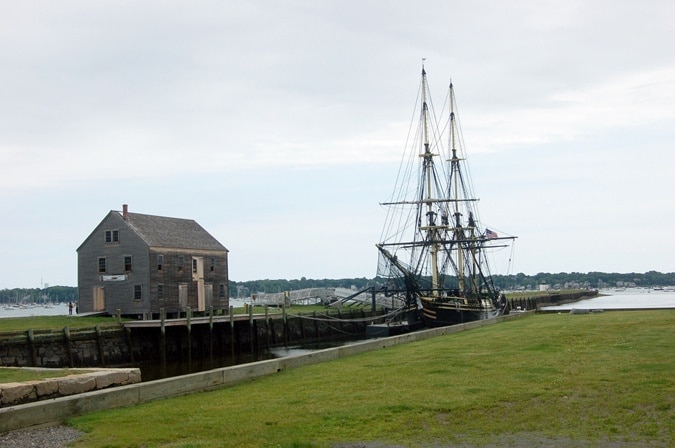Historic Downtown Salem | Art, Architecture, and Attractions
A summer daytrip to downtown Salem includes a visit to the Peabody Essex Museum and walking tours of Salem’s historic architecture and maritime history.
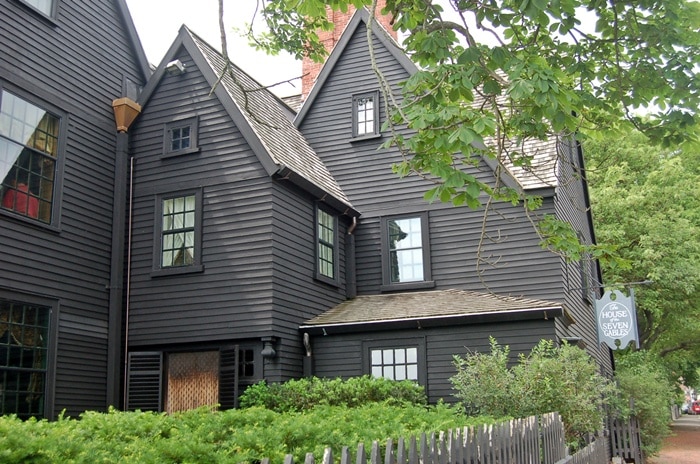
The House of the Seven Gables is a 1668 colonial mansion that inspired Nathaniel Hawthorne.
Photo Credit : Aimee SeaveyWe all know Salem, Massachusetts, has the witch thing covered, but a stroll through historic downtown Salem offers much more than just magic and mayhem. A first rate art museum, historic architecture, tasty lunch options, eclectic shops, and numerous reminders of the town’s maritime past make Salem the perfect spot for a summer day trip.
My summer day trip to Salem started with a visit to the modern, bright, and sunny Peabody Essex Museum. Established in 1799, it can be considered one of the oldest continuously operating museums in the country. Located today in a prime downtown setting, the museum’s total holdings include about 1.3 million pieces as well as twenty-two historic buildings. Many of the pieces are works of art and culture focusing on maritime art and history; American art; Asian, Oceanic, and African art; Asian export art; two large libraries with over 400,000 books and manuscripts.
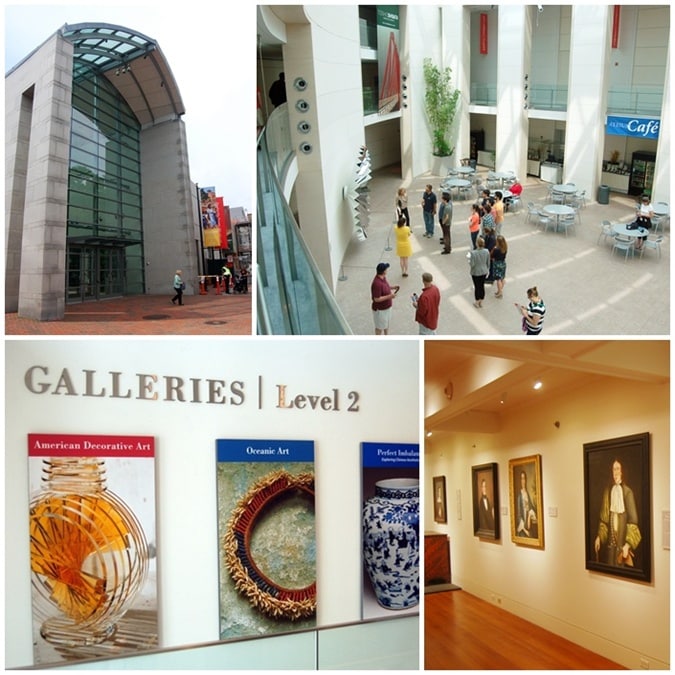
Photo Credit : Aimee Seavey
My favorite PEM gallery is the East India Marine Hall. The room is cavernous with a wall of windows and an expanse of wooden flooring. The walls are home to several figureheads (the carved wooden decoration, usually of a person, mounted to the prow of ships from the 16th through 19th centuries) and other maritime-themed paintings and artifacts.

Photo Credit : Aimee Seavey
Once I left the PEM, I headed down Essex Street. Trolleys packed with tourists, office workers grabbing coffee, and locals joined me. The brick and cobblestones give the downtown area a cozy, historic feel that makes it seem like any hometown Main Street, but with a little extra magic. This is Salem, after all…
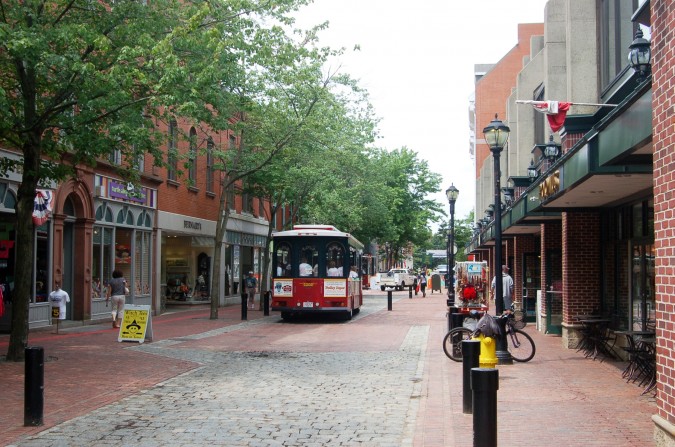
Photo Credit : Aimee Seavey
Wanting to check out some of Salem’s historic homes on this visit, I made my way towards the McIntire Historic District. The Salem Witch House on the corner of Essex Street and North Street serves as a sort of unofficial entrance to the district, and is pretty hard to miss. The house belonged to Judge Jonathan Corwin and is the only structure still standing in Salem with direct ties to the infamous witch trials of 1692. Tours of the house provide information about life in the 17th century and insight into the trials.

Photo Credit : Aimee Seavey
Salem’s McIntire Historic District boasts numerous Georgian- and Federal-period houses designed or influenced by architect (and Salem native) Samuel McIntire. Helpful markers underfoot help visitors find their way, and within moments I was walking along wide brick sidewalks and surrounded by beautiful old homes.
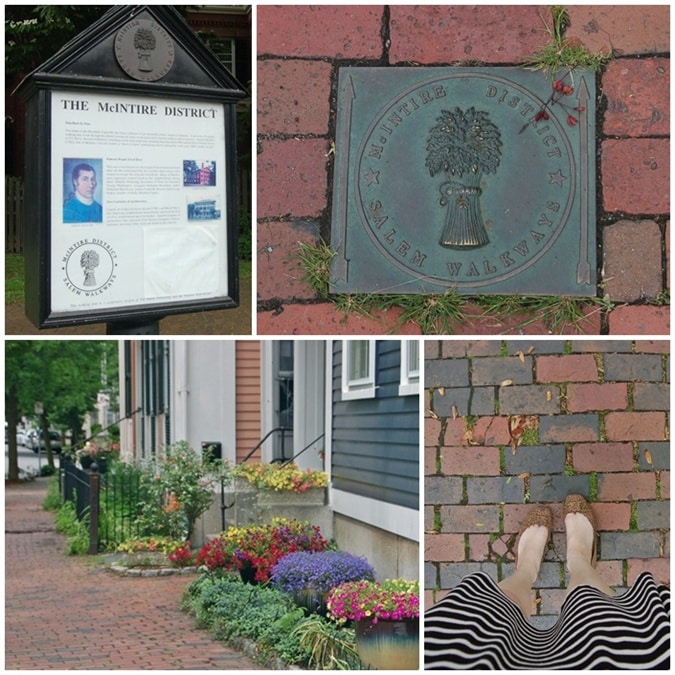
Photo Credit : Aimee Seavey
One such dwelling was the Ropes Mansion, which was home to three generations of the Ropes family and is now part of PEM. Built in the Georgian style in 1727, it renovated in 1894 in the Colonial Revival style.
Turning onto Chestnut Street, I had to remind myself that I was a short walk away from downtown Salem and not on Nantucket. The wide street lined with spectacular brick and wooden homes is considered one of the most beautiful streets in America, and I already can’t wait to visit it again when the leaves change, and again when it snows. I bet it looks stunning during the holiday season.
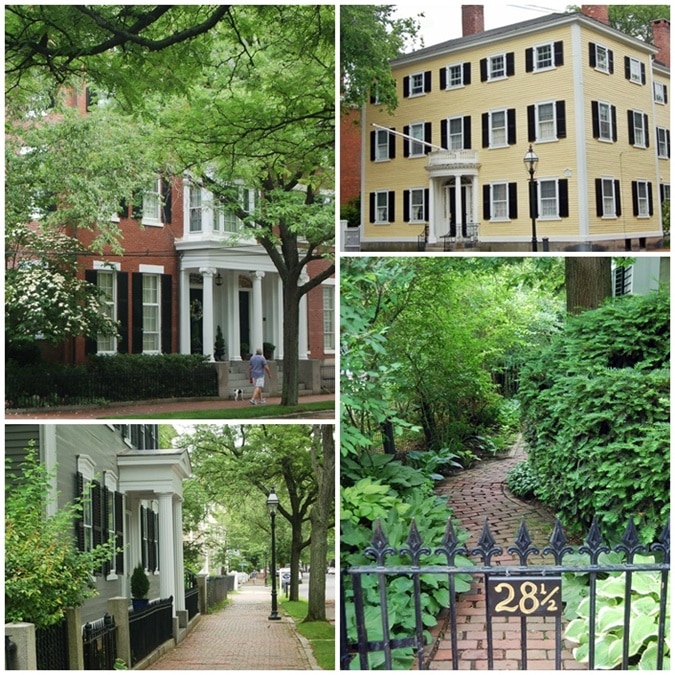
Photo Credit : Aimee Seavey
The Federal-style Phillips House is open to the public for tours from May through October, and its carriage house is home to a collection of antique vehicles.
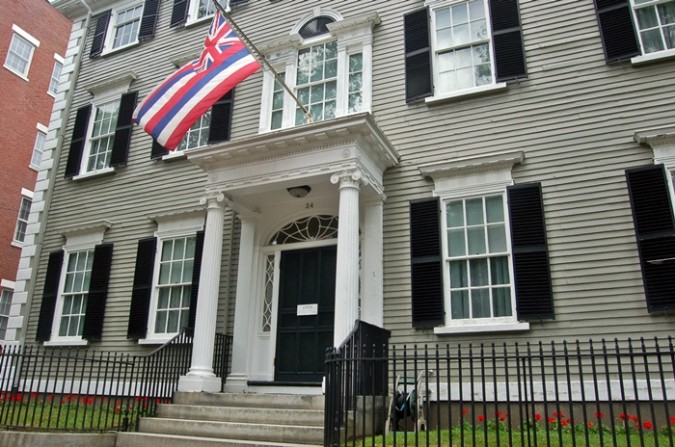
Photo Credit : Aimee Seavey
Hamilton Hall (named after Alexander Hamilton) was designed by McIntire and built between 1805 and 1807. It continues to be a popular spot for activities, largely thanks to its handsome ballroom that takes up most of the second and third floors.
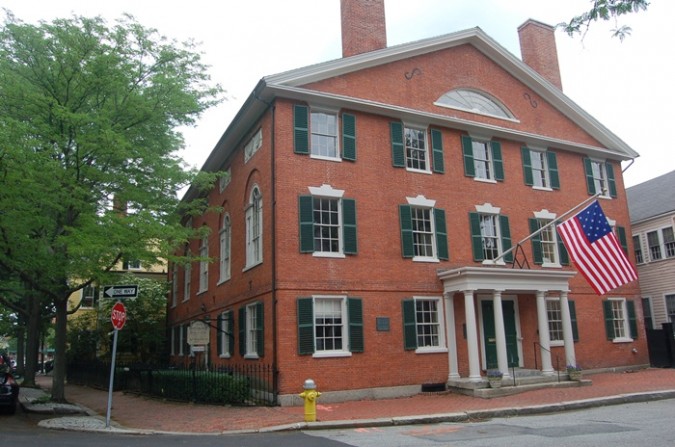
Photo Credit : Aimee Seavey
Finding myself back on Essex Street, it was time for lunch. I made my way to Gulu-Gulu Cafe, where I could sit outside and enjoy the summer sun and people-watch on the patio. My sandwich wrap, which came stuffed with grilled Portobello mushrooms, tabouli, hot pickled peppers, baby spinach, feta cheese, fresh tomatoes and red onion was also quite good.
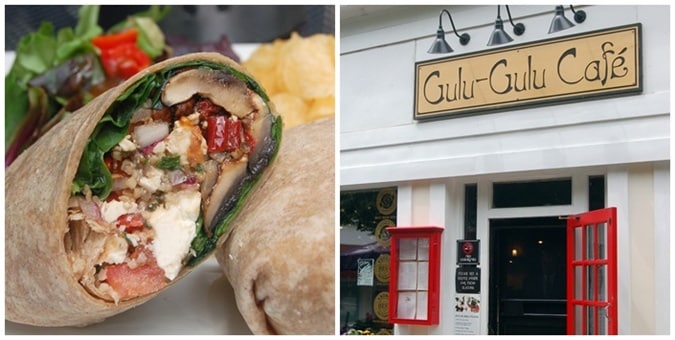
Photo Credit : Aimee Seavey
Energized and full, I headed off towards the water with a quick stop at the 1637 Burying Point, the oldest burying ground in Salem, and the final resting place of our friend Mr. McIntire. It was a typical Salem experience to stroll through a 17th century graveyard with a view of the Salem Wax Museum in front of me and simultaneously smell of the ocean, fried seafood, and patchouli.

Photo Credit : Aimee Seavey
I next made my way to the Salem Maritime National Historic Site, which spans around nine acres on the waterfront and includes twelve historic structures. Two fine brick examples are the Georgian Derby House, built in 1762 by Captain Richard Derby as a wedding gift for his son, and the 1819 Customs House (the 13th in Salem at the time) where taxes were collected on imported cargo.
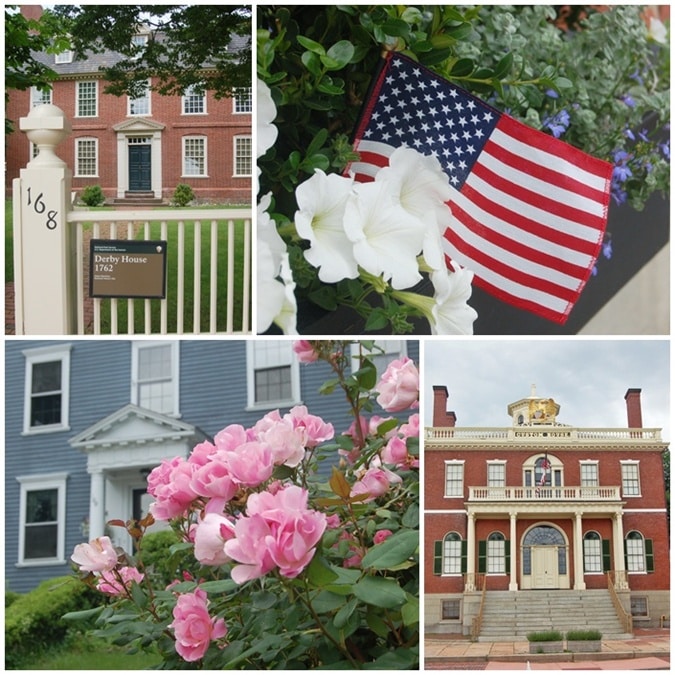
Photo Credit : Aimee Seavey
Also on display is the Friendship of Salem, a 2000 replica of the original 1797 ship of the same name that made fifteen voyages during her career to Batavia, India, China, South America, the Caribbean, England, Germany, the Mediterranean, and Russia before being captured by the British during the War of 1812.
Then it was on to the House of the Seven Gables. As I got closer I spotted the Ye Olde Pepper Candy Companie, which claims to be America’s oldest candy company (making candy the old fashioned way since 1806). As a pretty serious candy lover, I was intrigued by the words “Home of the Famous Gibralters and Black Jacks” — what could these be?
The friendly folks inside were happy to oblige me with a sample of peppermint Gibralter (it also comes in lemon), said to be the first candy made and sold commercially in America and carried around the world by sea captains and their crew. It tasted like a melt-in-your-mouth after dinner mint. Black Jacks (which I didn’t sample) are a stick candy made from old fashioned black strap molasses, and are still made by hand today just as they were 200 years ago.
I opted to buy some butterscotch drops to take home with me, and they didn’t last long.
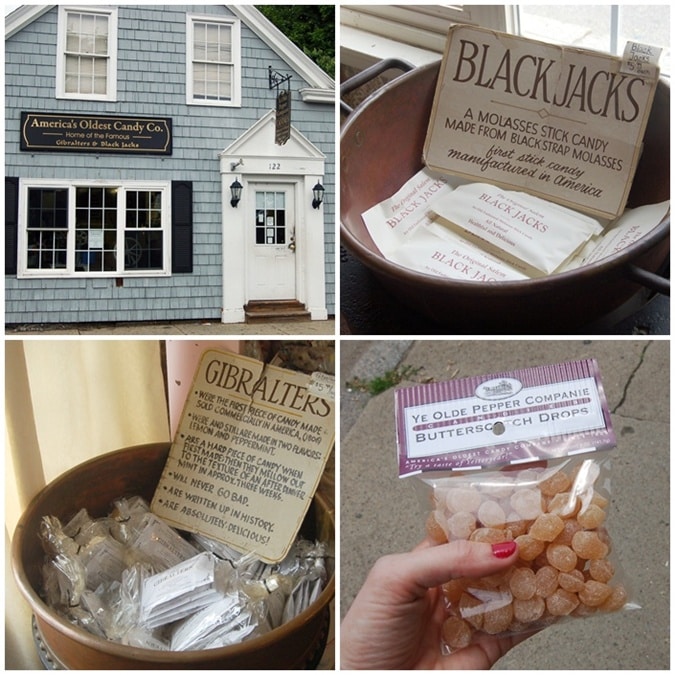
Photo Credit : Aimee Seavey
The House of the Seven Gables is a 1668 colonial house that claims to be the oldest surviving mansion house in continental North America with 17 rooms and over 8,000 square feet, but it is most commonly known as the house that inspired author and local resident Nathaniel Hawthorne to use it as the setting and title for his 1851 novel The House of the Seven Gables. Over its nearly 350-year history, the house underwent numerous expansions and renovations (with gables coming and going) until the early 1900’s when it was restored and set up an admission-museum, which is remains today.
I opted not to go on the tour, which is why the photo below is at an odd angle down a side street, but you get the idea.
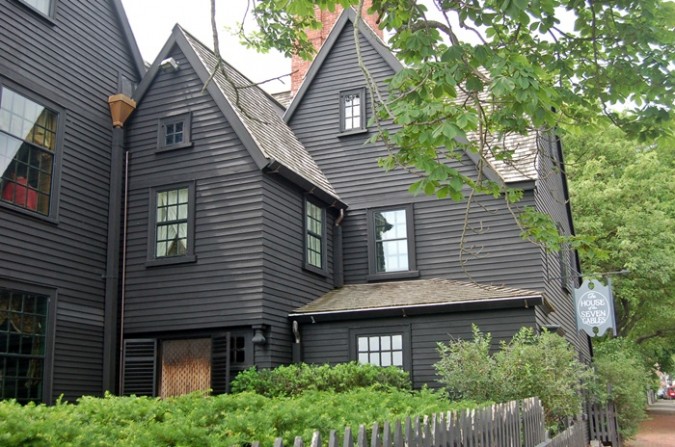
Photo Credit : Aimee Seavey
With clouds darkening and rain coming, I ended my day in historic Salem with a final stroll back down Derby Street, up Orange Street, and back onto Essex and my waiting car. Along the way I met several reminders of Salem’s dominant claim to fame mixed in with the typical shops, restaurants, and businesses of a normal city — stuffed witches on the sidewalk, businesses with witch-themed names, countless psychic options, and even a statue of Elizabeth Montgomery as famed 1960’s TV witch Samantha Stephens.
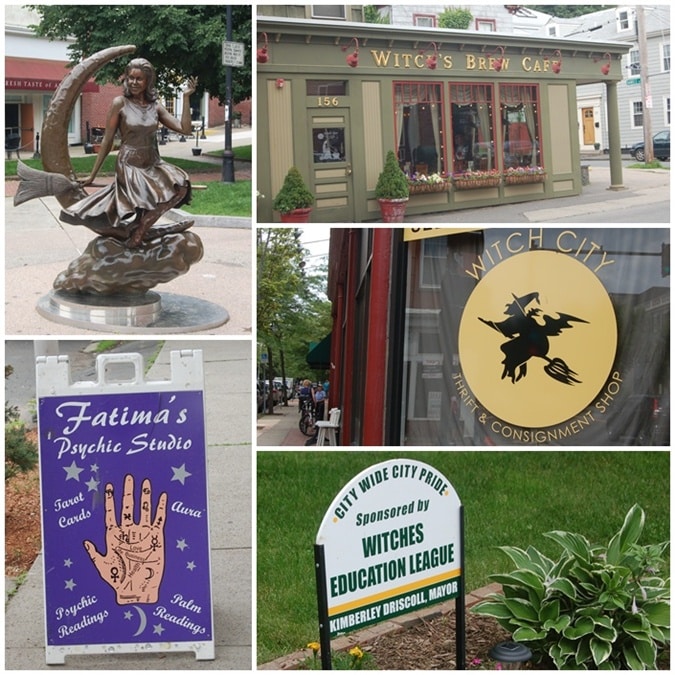
Photo Credit : Aimee Seavey
These days in Salem, it’s good to be a witch, but it’s also a terrific place to visit if you’re interested in art, colonial architecture, maritime history, and even old-fashioned candy in a fun, walkable setting with plenty of restaurants and shopping to keep you moving. Why not skip the crowds of October and head to Salem in the summer?
Have you ever visited historic downtown Salem?
This post was first published in 2013 and has been updated.
Aimee Tucker
Aimee Tucker is Yankee Magazine’s Home Editor and the Senior Digital Editor of NewEngland.com. A lifelong New Englander and Yankee contributor since 2010, Aimee has written columns devoted to history, foliage, retro food, and architecture, and regularly shares her experiences in New England travel, home, and gardening. Her most memorable Yankee experiences to date include meeting Stephen King, singing along to a James Taylor Fourth of July concert at Tanglewood, and taking to the skies in the Hood blimp for an open-air tour of the Massachusetts coastline.
More by Aimee Tucker


